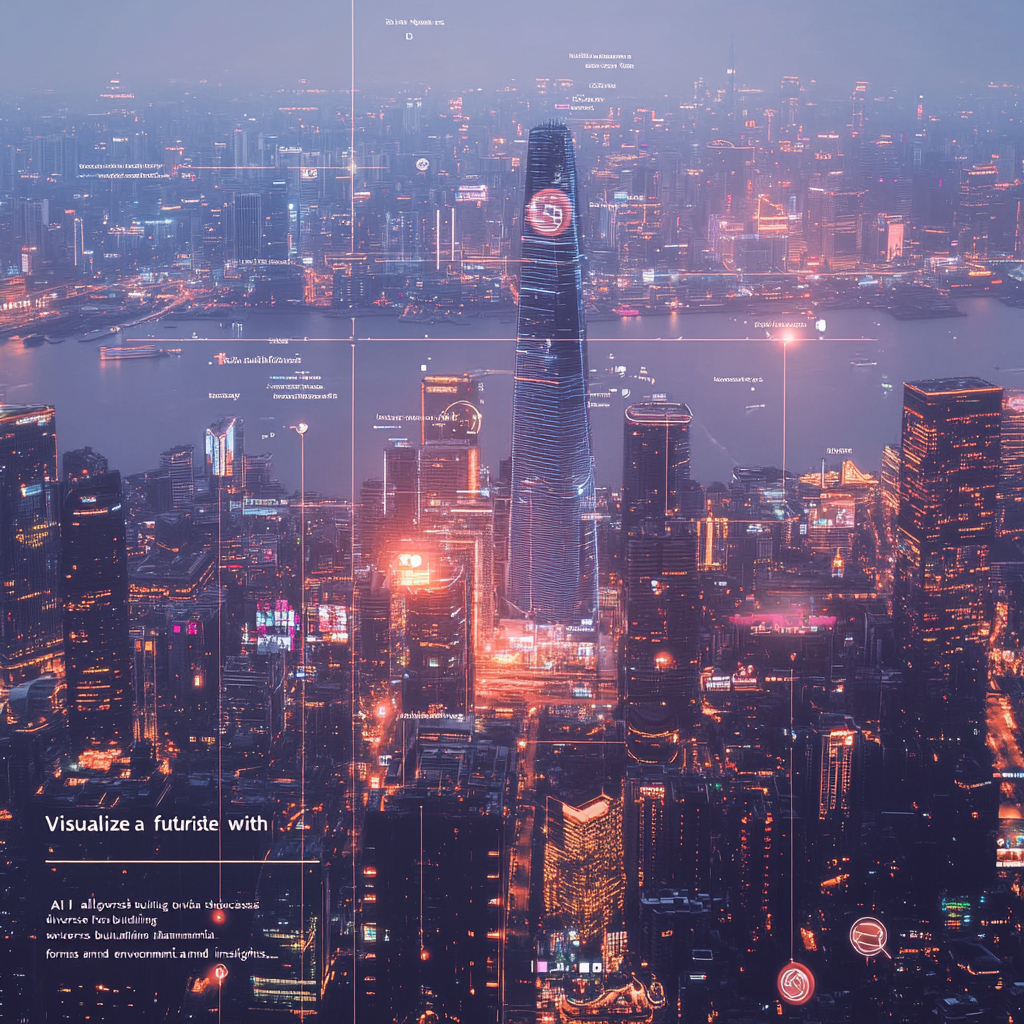
“Elevating Architecture: AI’s Role in Predicting Skyscraper Heights”
In the vibrant tapestry of modern urbanism, predicting the heights of buildings is not just a trivial pursuit; it’s a necessity. We find ourselves in a world where concrete jungles multiply like rabbits, rising skyward with the determination of a toddler who’s just discovered they can climb. Understanding how tall these structures are isn’t merely for satisfying our inquisitive minds. It plays a pivotal role in urban planning, energy management, and even environmental preservation. So let’s dive into this world where machine learning is the new superhero caped in algorithms, ready to wrap our unorganized data into a neat little bow of accuracy.
The urgent need for precise building height data should not be understated. We’re witnessing cities ballooning like over-inflated balloons at a birthday party, and with each new addition to our urban landscapes, we need to be armed with knowledge. After all, how do you plan a park when the neighboring skyscraper blocks the sunlight? How do you design energy-efficient buildings if you don’t know how tall the existing ones are? But here’s the kicker: historically, gathering building height data on a global scale has been akin to finding a needle in a haystack—an intricate and labor-intensive endeavor that’s often marred by inaccuracies. Shadows dance and distort, data collection plunges into error, and we’re left with a muddled mess that can barely give a clear picture of the urban fabric.
Enter our modern-day wizards—those bright minds at Oak Ridge National Laboratory, Clinton Stipek and Taylor Hauser. Armed with their proverbial wands of technology, they’ve conjured an algorithm that can predict building heights with stunning accuracy. How, you ask? Through a meticulous analysis of various building morphology features, such as form, dimensions, and the relationships of buildings with their neighbors. They’ve crafted an open-source code that exploits a treasure trove of 65 different features to achieve this. Maybe it’s more complex than brushing up for a game of chess, but the essence remains: they’ve found a way to transform complex data into tangible predictions.
The secret sauce? A nifty little thing called the XGBoost algorithm—a gradient boosting tree that clusters these myriad features together. This powerhouse can extrapolate the third dimension (the height) using only the two-dimensional powers of building morphology. Impressive, right? The algorithm mostly hits the nail on the head, predicting building heights to within three meters of accuracy. In a world where sometimes even a GPS can lead you astray by a block, that’s quite a feat.
But Stipek and Hauser aren’t the only ones dabbling in this exciting new realm. The horizon holds a wealth of innovative techniques in the wild world of building height estimation. We’ve got the deep learning-based super-resolution methods making waves, which suggests that high-resolution building height maps are just around the corner. Researchers are playing around with Sentinel satellite imagery, mixing it up in a high-tech kitchen where pixels turn into products, estimating building heights in urban environments with a spatial resolution of 2.5 meters. Pretty slick!
Let’s not forget the innovators using single street-level images to suss out building heights. This no-nonsense approach, powered by the EfficientNet architecture, is like using a microscope to discover minute details previously hidden. The result? An impressive Mean Absolute Error (MAE) of just 1.21 meters! Essentially, this method has strutted into town and booted traditional estimation methods to the curb, outperforming them without breaking a sweat.
And if you thought this was cutting edge, hang on tight. Mixed data models are also in the mix—combining Sentinel image patch data with numerical features to achieve greater precision. Picture this: a study utilizing such a model managed to achieve an MAE of only 1.89 meters. It’s like having the best pie with the perfect crust right out of the oven, its glory enhanced by every ingredient being just right.
Why is this all so crucial, you may wonder? You see, these accurate predictions of building heights are going to transform how we engage with our urban spaces. Urban planning could be revolutionized, with zoning regulations developed more efficiently. Energy management is set to undergo a rethink, too, with accurate building heights facilitating better estimates for energy usage. Forget the guesswork—now we’re talking numbers and applications that can lead to impactful changes! Plus, keeping tabs on environmental health could become a far less daunting task when we have the building data we need to monitor urban heat islands and other phenomena.
The implications spill over into exciting global projects as well. Major initiatives like LandScan and Global Building Intelligence are putting these research findings into action, seeking to equip cities with comprehensive data attributes on buildings—height, materials used, the age of the structure, roof shape, and beyond. It’s as if these projects are promising a sleeker, more efficient urban landscape while safeguarding our environment!
As we round off this exploration, it’s clear that the marriage between machine learning and global building height prediction is something special. Picture it as a dance of algorithms gracefully entwining with newfound data—making our cities more manageable and environmentally friendly.
Nonetheless, as we gaze into the crystal ball, what wonders lie ahead? The future holds more sophisticated and scalable methods for building height estimation. So, if you want to stay hungry for more learning and developments that pave the path toward smarter urban living, why not take the plunge and subscribe to our Telegram channel? There, you’ll find the latest news on neural networks and automation waiting for you: @channel_neirotoken. Join us in this riveting journey through technology and innovation!

